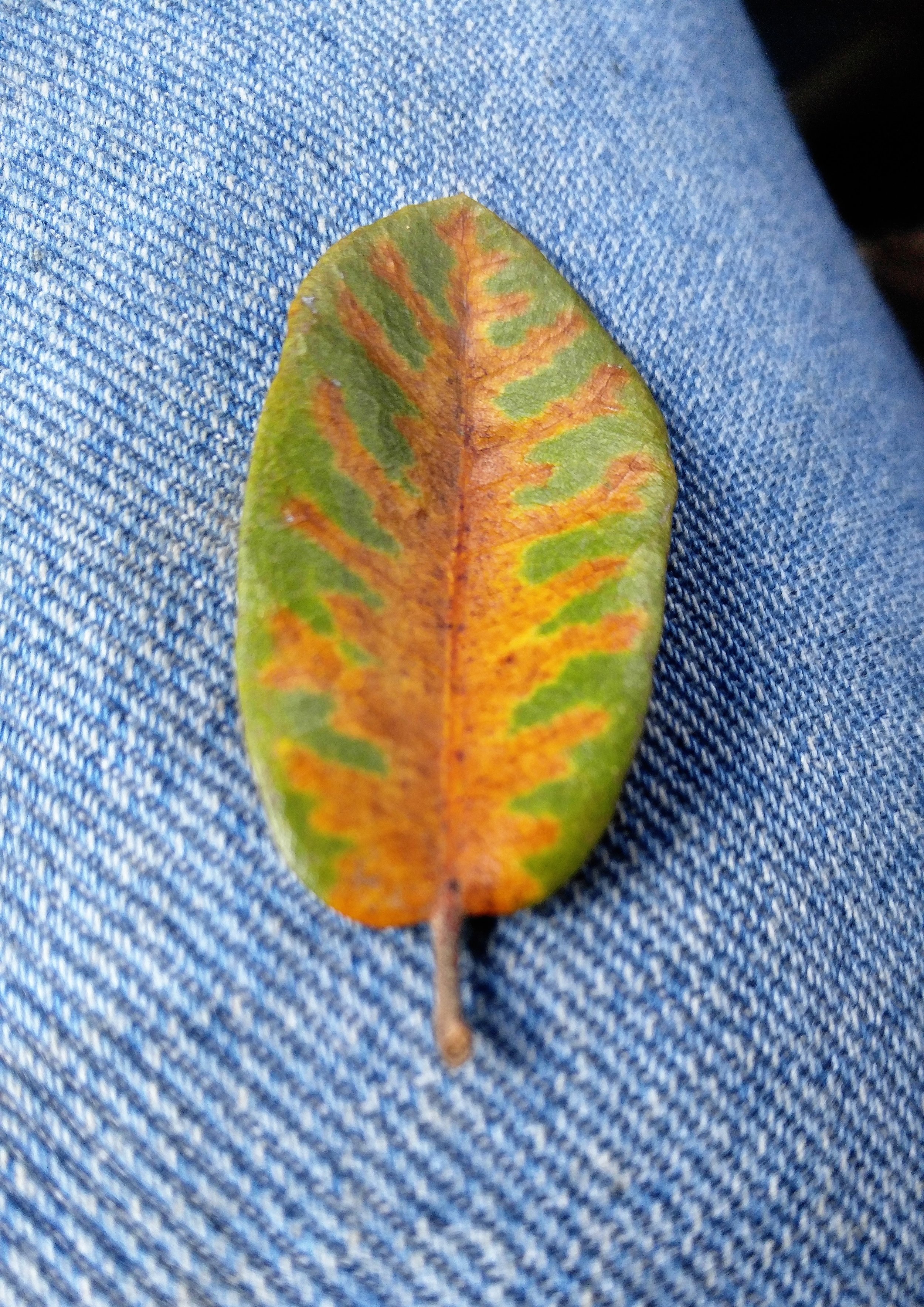- Vascular disease caused by the fungus Ceratocystis fagacearum
- Affects all families of Oak trees (Red Oaks and Live Oaks are most susceptible)
- Oak Wilt attacks the vascular system of Oaks and ceases water/sap movement into the crown of the tree
- Oak Wilt has killed over 1 million trees in Texas, according to the Texas A&M Forestry Service
- Oak Wilt predominantly moves through root networks but is also transmitted via aerial vectors like the Nitidulid Beetle
- The Nitidulid Beetle transmits the fungal spore from Spanish oak trees to Live Oak trees as its attraction to Oak sap causes it to move naturally to open wounds where sap is present
- Infected Live Oak trees will often exhibit veinal necrosis (seen in photo above) or occasionally tip burn (seen to the right)
Oak Wilt originates in the native Texas Red Oak (Spanish Oak) and forms fungal pads underneath the the bark. In Fredericksburg, Tx, and the surrounding Hill Country, Oak Wilt has moved aggressively killing thousands of Oak trees over the last decade. This rapid movement is amplified by the dense, monoculture Live Oak forests that have developed throughout the region. The formed root grafts create a "highway" system for the fungus to move from tree to tree, infecting motts at a rapid pace. When Live Oak trees become infected, they will generally defoliate from the crown of the canopy downward and the foliage will develop a reddish-brown tint. This process can take 2 weeks- 6 months and varies in length depending on the cultivar. During this time, a tree can be diagnosed by a Certified Arborist and a management strategy can be created.
Management & Prevention
A preventative approach to any pest or disease is always optimal, however the aggressive development of Oak Wilt throughout the Texas Hill Country has made this difficult.
Identification is the initial step in preventing the spread of Oak Wilt. Contact a Superior Services Certified Arborist to confirm whether or not Oak Wilt is present. Furthermore, Oak tree pruning should be performed during the winter or summer months as these are the periods of least activity for Oak Wilt movement. When trees are pruned, wounds should be sprayed with a sealing spray immediately to prevent the exudation of sap. Equipment should also be sanitized prior to any trimming being performed.
Infected or high-value trees can be considered for chemical treatment of Oak Wilt by a licensed applicator. The chemical applied is a propiconazole fungicide that is rated for Oak Wilt control. If used preventatively, this treatment has proven to minimize the risk of tree mortality due to Oak Wilt. Used in a curative fashion, the fungicide hasn't been as effective.
Trenching to quarantine an Oak Wilt center is another approach recognized by the Forest Services as an effective method of Oak Wilt control. Trenching is done with a large rock saw that is capable of going at least 4' deep into the soil. This eliminates any root grafts that might exist. Back fill is applied immediately to cover the severed roots.
When trees die or become heavily infected with Oak Wilt they should then be removed and disposed of properly. Proper removal of infected trees includes: burning on site, chipped/ mulched, hauled to licensed disposal site, processed into firewood and moved away from any other Oak trees, or left to season in a debris pile. The stump should be sealed or removed to eliminate further transmission.
If you'd like to learn more about Oak Wilt, or would like to develop a strategy for dealing with Oak Wilt, contact Superior Services Tree Care today to meet with a Certified Arborist.









